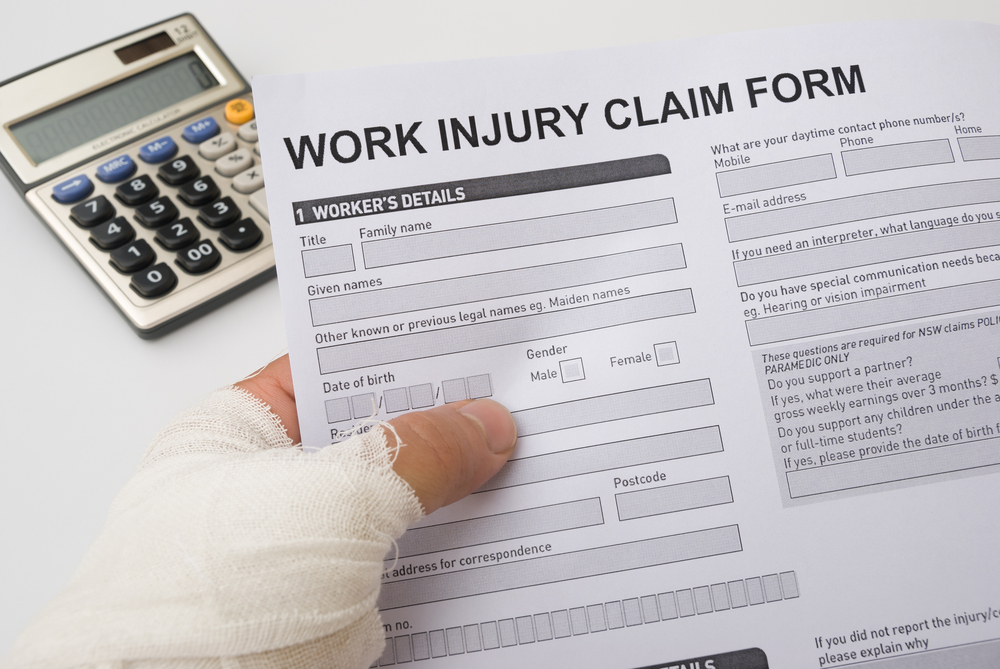Workers’ compensation fraud has been on the rise.
|The poor U.S. economy, the mortgage meltdown and governmentcutbacks are all contributing factors. Even rising student debt isplacing pressure on young people. Unfortunately, some see fraud asa solution to their challenges and consider it easy money, unawareof the potential consequences. There are plenty of examples ofsophisticated cases that require careful and persistentdigging.
|Insurers write more than $1 trillion in insurance premiumsannually according to the Federal Bureau of Investigation (FBI),providing significant opportunities for fraud to be perpetrated.The FBI estimates the total cost of non-health insurance-relatedfraud to be more than $40 billion per year, costing the averageU.S. family an estimated $400 to $700 per year in increasedpremiums.
|The National Insurance Crime bureau says that Workers’Compensation fraud accounts for approximately 25% of the fraudperpetrated, or approximately $7.2 billion annually and is one ofthe fastest growing areas of fraud. One insurance executive hassaid that “If Workers’ Compensation fraud were a legitimatebusiness, it would rank among Fortune 500 companies.”
|Sadly, the cost of this fraud is not limited to any one entity;policyholders, employers, insurers, consumers and shareholders allbear the expense.
||
Photo: KasparsGrinvalds/Shutterstock
|With cases of Workers’ Compensation fraud, there are threeprimary points of contact – the worker, the employer and themedical provider. Fraud may be committed for a variety of reasonsincluding:
|Claimants
- Financial problems
- Lack of medical insurance
- Sense of entitlement
- Looming layoffs
- Adverse employment action
Employers
- Reduce premiums
- Underbid competitors
- Reduce costs
- Bonus tied to safety programs
Providers
- Organized crime
- Exploitation of loopholes
- The competition is doing it
- Greed
In California, insurers are required to maintain a specialinvestigations unit (SIU). As a broker, Keenan does not fall underthis mandate, but it does operate its own SIU as part of itsservice for providers.
|Many compensability issues can be resolved by an informalinquiry by an examiner. In other cases, with high cost potential orcomplex subrogation issues, a referral to a licensed investigatormay be appropriate.
||
Photo: Freer/Shutterstock
|What is insurance fraud?
|At its most basic, Workers’ Compensation fraud occurs when anindividual purposely lies to obtain some benefit or advantage, orto cause some benefit that is due to be denied. It is a felony andcan result in prison time and/or payment of restitution.
|Employee fraud can involve a claim for an injury that did notoccur or did not occur in relation to the job, or receipt of totaltemporary disability benefits as a result of lying about outsideemployment, re-employment or ability to work. In billing fraud, aprovider submits a bill for services never provided, for a patientwho was never examined, or for more services or time than wasactually provided. Abuse, as opposed to outright fraud, can includesending claimants to specific attorneys, doctors or facilities;kickbacks for insurance reps of employees; and rewards or gifts forquick or favorable settlement of claims.
|Here are some specific examples:
- Knowingly presenting, or causing to be presented, any falseclaim for the payment of a loss, including a loss under a contractof insurance.
- Knowingly presenting multiple claims for the sameincident.
- Knowingly causing or participating in a vehicular collision forthe purpose of presenting a false or fraudulent claim.
- Knowingly preparing, making or subscribing any writing with theintent to present or use it in support of a false or fraudulentclaim.
A few caveats are in order here. Each case must be considered onits own merits. Do not designate people for special attentionsimply based on their origins, ethnicity, profession or area ofpractice or because they do a large volume of business. Avoidgeneralized and accusatory statements. Beware of withholdingpayments or making accusatory statements based on the serving ofsearch warrants or the filing of criminal charges.
||
Photo: Brian A. Jackson/Shutterstock
|1. Evaluating the potential case
|Although the process of pursuing Workers’ Compensation cases isfairly straightforward, attention to detail and the properresources are essential for success. Solid experience and trainingon the part of the examiner is essential in identifying things thatsimply don’t feel right in the early stages. The first step is tolook for red flags. In training examiners, Keenan has identified 42indicators. They include things like:
- Claimant is exceedingly eager for a quick or discountedsettlement.
- Claimant lists P.O. box or hotel as their residence.
- Claimant threatens to see a doctor or attorney if the claim isnot settled quickly.
- Claimed injuries are disproportionate to the impact of theaccident.
- Claimant has financial or marital problems.
- Claimant wants a relative or friend to pick up settlementcheck.
- Claimant will not provide a sworn statement or documentation toconfirm loss or value.
- Claimant has multiple prior claims or lawsuits.
- Claimant “over documents” losses.
- No independent witnesses or versions differ significantly.
- Claimant recently purchased private disability insurancepolicy(ies).
- Accident is not the type in which the claimant should beinvolved.
- First Report of Claim differs significantly from description ofaccident in medical report(s).
- Claimant reports an alleged injury immediately followingdisciplinary action, notice of probation, demotion or being passedover for a promotion
- Alleged injury relates to a pre-existing injury or healthproblem

Photo: Nito/Shutterstock
|2. Investigating suspected fraud
|If there appear to be grounds for a case, an investigator isengaged. The first criterion is a valid and current license. Othersinclude proven expertise in the investigation of Workers’ Compclaims; a track record of well-managed, efficient andcost-effective investigations; the use of state-of-the-arttechnology for surveillance; current knowledge on applicablelegislation; availability for courtroom testimony; online casemanagement system; and a process of internal audits.
|The investigator will monitor the individual’s activities, talkto neighbors, review medical conflicts and the like. Observation,including video surveillance and recorded statements, usually takesplace over a period of two to three days to identify consistentbehavior patterns.
|Other resources include medical records, employment records,business/asset records, and the ISO Index of criminal records andprevious injuries. Confirm all information with authenticateddocumentary evidence, which will be admissible in court. And whendocumenting claim notes, do not use the term “fraud,” but insteaduse phrase “potential fraud” or “alleged fraud.”
|Professionals who can assist in this process include defensecounsel, regency investigations, accident reconstructionists,source/origin experts, agreed medical evaluator/qualified medicalevaluators (AME/QME), technical experts and laboratories, andindependent appraisers and analysts.
|Here are some guidelines on when to utilize telephone, on-siteand sub-rosa investigation methods:
|Telephone
|(least expensive)
- Employer disputes the injury.
- Injury was not reported to employee’s supervisor, who can beinterviewed by telephone.
- There is another witness to the alleged injury.
- Circumstances suggest that an on-site inspection is notrequired.
- Apportionment or preexisting injury.
- Short-term employee with Monday morning injury.
- Alleged injury reported after termination.
- Preliminary subrogation investigation.
On-Site
|(moderately expensive)
- Multiple witnesses, unable to or uncomfortable with beinginterviewed by telephone.
- Content of investigation is too extensive to be conducted bytelephone.
- Circumstances of alleged injury suggest employee was notperforming regular job duties at time of injury, not supposed to bein the area, or not making full use of available safetyequipment.
- Review of personnel records required.
- Extensive history of personal problems, medical problems,drug/alcohol abuse.
- Employer disputes validity of claim.
Activity Check/ SubRosa
|(most expensive)
- Interview of witnesses discloses employee boasted aboutclaiming to be injured in order to collect Workers’ Compensationbenefits.
- Medical reports in the file do not appear to support theseverity of alleged injury.
- Claimant is never available to take telephone calls atclaimant’s residence.
- No Employment Development Department (EDD), unemployment ortemporary disability is being paid.
- Information is received that the employee is working.
- Information is received that the applicant participates insports or other activities that could have caused the allegedinjury.
Adhering to some overall best practices will significantlyimprove the validity of a case. Make sure to obtain authorizationsfor the release of medical and employment records, request allrecords from the medical provider, do not include date of loss inrecords requested, closely review all documents and obtain recordsreferred to in current records, and obtain complete writtenstatements. If the claimant will not provide or counsel will notallow a written statement, request that the defense attorneyperform a deposition if it has not already been done.
|Once the investigation is complete, the next step is anevaluation, typically by a district attorney and the department ofinsurance to determine the viability of a case and the chances forsuccess. A case may then take three to six months to build, part ofwhich is to determine whether the situation involved abuse orfraud. The case is then presented to a judge, and in California thedepartment of insurance makes the actual arrest.
||
Photo: Photographee.eu/Shutterstock
|3. Post-filing investigation and discovery
|Once the decision is made to proceed, it is advisable to take anaggressive defense posture. If the case appears to be fraudulent,have counsel make clear at the beginning that the company will trythe case. Insist upon accurate and complete discovery. Closelyreview all discovery responses, especially verifications. Discusswith defense counsel the strategies for taking the offensive inlitigation.
|Also, keep in mind that regardless of what happens in thecriminal prosecution of a fraud case, the underlying Workers’Compensation claim must still be administered. Benefits do not stopjust because there is a suspicion of fraud. Administration of thecompensation claim must continue according to Workers’ Compensationlaws.
|Some claims may appear minor at first and then subsequentlyescalate, resulting in very costly surgery and indemnity costs, forexample. Now more than ever, the role of the special investigationsunit is absolutely critical in gathering accurate informationquickly and helping to make strategic decisions early on that willimpact the overall outcome of a claim.
|Stacey Golden, director of claims for Keenan, is responsiblefor leading the firm’s SIU/Fraud Unit, PRIDE program for legaldefense cost containment, training and development, iVOS computersystem integration, and vendor management. Golden is also anadvisor to the California-based Employers’ Fraud Task Force and aguest lecturer for the Insurance Educational Association (IEA). Shehas been in the industry for over 20 years and is certified by theIEA, Workers’ Compensation Claims Professionals Association andCalifornia Office of Self Insurance Plans.
|Want to continue reading?
Become a Free PropertyCasualty360 Digital Reader
Your access to unlimited PropertyCasualty360 content isn’t changing.
Once you are an ALM digital member, you’ll receive:
- All PropertyCasualty360.com news coverage, best practices, and in-depth analysis.
- Educational webcasts, resources from industry leaders, and informative newsletters.
- Other award-winning websites including BenefitsPRO.com and ThinkAdvisor.com.
Already have an account? Sign In
© 2024 ALM Global, LLC, All Rights Reserved. Request academic re-use from www.copyright.com. All other uses, submit a request to [email protected]. For more information visit Asset & Logo Licensing.








